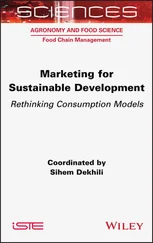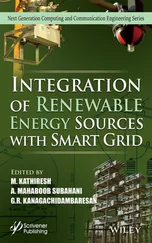Renewable Energy for Sustainable Growth Assessment
Здесь есть возможность читать онлайн «Renewable Energy for Sustainable Growth Assessment» — ознакомительный отрывок электронной книги совершенно бесплатно, а после прочтения отрывка купить полную версию. В некоторых случаях можно слушать аудио, скачать через торрент в формате fb2 и присутствует краткое содержание. Жанр: unrecognised, на английском языке. Описание произведения, (предисловие) а так же отзывы посетителей доступны на портале библиотеки ЛибКат.
- Название:Renewable Energy for Sustainable Growth Assessment
- Автор:
- Жанр:
- Год:неизвестен
- ISBN:нет данных
- Рейтинг книги:4 / 5. Голосов: 1
-
Избранное:Добавить в избранное
- Отзывы:
-
Ваша оценка:
- 80
- 1
- 2
- 3
- 4
- 5
Renewable Energy for Sustainable Growth Assessment: краткое содержание, описание и аннотация
Предлагаем к чтению аннотацию, описание, краткое содержание или предисловие (зависит от того, что написал сам автор книги «Renewable Energy for Sustainable Growth Assessment»). Если вы не нашли необходимую информацию о книге — напишите в комментариях, мы постараемся отыскать её.
This outstanding new volume
Renewable Energy for Sustainable Growth Assessment — читать онлайн ознакомительный отрывок
Ниже представлен текст книги, разбитый по страницам. Система сохранения места последней прочитанной страницы, позволяет с удобством читать онлайн бесплатно книгу «Renewable Energy for Sustainable Growth Assessment», без необходимости каждый раз заново искать на чём Вы остановились. Поставьте закладку, и сможете в любой момент перейти на страницу, на которой закончили чтение.
Интервал:
Закладка:
3.3.2.3.3 Combined Heat and Power (CHP)
Combined heat and power (CHP) generation improves the overall performance of power systems. Its efficiency is higher than the general way of conversion. Biomass-fuel-based CHP is a substitute for combining efficient power systems with sustainable, climatic conditions-neutral gasoline [97]. Issues affecting CHP systems’ production include uncertainties, challenges in assuming the structure surrounding the infrastructure, extensive system borders, and displacement consequences [97].
3.3.2.3.4 Transesterification
Transesterification is described as the chemical conversion technique of alcohol triglycerides into alkyl esters using a catalyst [98]. In the presence of catalysts such as potassium hydroxide, a transesterification process is performed to produce biodiesel and alcohol from different kinds of biomass sources, such as cooking oils, milk waste rich in lipid sources [99, 100]. The wet-transesterification process is more economical than the conventional system for treating wet biomass (sewage sludge) without a drying process [26].
3.3.2.3.5 Cellulosic Biomass Conversion
As a substrate, biomass rich in cellulose such as lignocellulose and micro and macroalgae is used to process ethanol. Two steps are included in the transformation of biomass into ethanol: (i) pre-treatment and saccharification; (ii) fermentation [101]. Low yields and high costs for the pre-treatment and hydrolysis of cellulose are the significant barriers of existing technology in developing ethanol from biomass.
3.3.2.3.5.1 Pre-treatment and Saccharification
Acid and alkaline pre-treatment are the chemical compounds that have the potential to hydrolyze lignocellulosic biomass efficiently [92]. Alkaline pre-treatments raise the crystallinity of cellulose rather than the acidic pretreatment. Both pre-treatments release phenolic content; the maximum is with acid pre-treatments [102]. Combined pre-treatment with hydrothermal treatment and Fenton treatment efficiently facilitates the enzymatic hydrolysis of lignocellulosic biomass [103]. Mild O 2-aided alkaline pre-treatment enhances structures fractional quality and enzymatic hydrolysis of biomass. Compared to traditional alkaline pre-treatment, more than 80% lignin and 92% cellulose at 80 °C and with 1% dilute NaOH extracted via O 2-aided alkaline pre-treatment [104]. Xu et al. [105] demonstrated that choline chloride has significant efficacy in the pre-treatment of lignocellulosic biomass. Acidic hydrothermal pre-treatment with O 2effect on redox environment results in increased intensity, lower recovery of pre-treatment solids, lower recovery of glucans, better elimination of hemicellulose, pseudo-lignin production, improved total conversion of glucans, and increased concentrations of many microbial inhibitors [106]. The most successful pre-treatment process providing the shortest pre-treatment period relative to anoxia and alkali pre-treatment was ultrasonic pre-treatment for releasing microbial cells from WAS (waste-activated sludge) flocs and subsequent phagotrophic algae development. Ultrasonic pre-treatment was accomplished predominantly by breaking physical attracting forces, while the liberation of microbial cells was performed by breaking ionic bonds in alkali pre-treatment [107]. They were also stated that during algae formation, re-flocation of released microbial cells was observed in ultrasonic pre-treatment but was less resistant to floc reform in alkali pre-treatment.
Microwave-assisted (MW) pre-treatment compared to ultrasound is superior for removing hemicellulose [108]. A hydrolysate without any inhibitors and maximum reducing sugar at low solid loading is obtained even under moderate MW pre-treatment conditions. They have revealed that these factors had no significant effect on the ultrasound-pretreated agave. Compared to pre-treatment with traditional heating, pre-treatment assisted with MW decrease the method’s time and temperature. Enzymatic pre-treatment with protease, viscozyme, and enzyme blend pre-treatment at 55 °C shows maximum saccharification. Preliminary economic evaluation findings revealed that the essential enzymes’ expense makes enzymatic pre-treatment not yet commercially feasible [109]. The generation of low-cost enzymes, however, could promote the use of enzymes in microalgae pre-treatment. The cheapest method for cellulose saccharification and co-fermentation of all reducing sugars, including pentose and hexose sugars with engineered microorganisms, was also in proceedings for the effective ethanol development of efficient pre-treatment technologies [31].
3.3.2.3.5.2 Fermentation
Separate hydrolysis and fermentation (SHF), a two-step method for the processing of butanol, whereas saccharification and fermentation (SSF), a one-step process carried with rice straw [110]. They have claimed that an SSF was more effective than an SHF, notably due to the time reduction from improved productivity. Wirawan et al . [111] showed ethanol production by continuous separate hydrolysis and co-fermentation (SHcF) and simultaneous saccharification and co-fermentation (SScF) from alkaline pretreated sugarcane bagasse using Zymomonas mobilis (PVA immobilized cells) and Pichia stipitis (suspended cells). The ethanol yield and productivity of the SScF fermentation is higher than the SHcF process. S. cerevisiae an C. tropicalis produced ethanol from xylose and glucose without intrusion from H 2O 2-pretreated corn stover (CS) through SScF [112].
Consolidated bioprocessing (CBP) is a combination process of hydrolysis and fermentation. In modern times, using CBP to transform lignocellulosic biomass into suitable substances has gained considerable research attention to increasing the development of alternative fuels using a cost-effective method [113]. The co-culture of C. saccharoperbutylacetonicum with the fungus Phlebia sp. MG-60-P2 under anaerobic conditions in consolidated bioprocessing synergistically derived butanol from lignocellulosic materials and enhanced saccharification [114]. In another study, Singh et al. [115] have extracted docosahexaenoic acids and bioethanol from rice straw biomass by integrated consolidated thermoanaerobic and marine thraustochytrid bioprocessing. A semi-continuous cycling system possessing self-cycling fermentation (SCF) is used to detect the beginning of the stationary phase; once half of the broth volume has been seen, it is immediately collected then supplemented with a freshly prepared broth to begin the next stage [116, 117]. SCF can improve the yield and efficiency of products. Applying SCF to ethanol production improves efficiency dramatically and enhances the cellulosic ethanol industry [116].
3.3.3 Biofuel as Renewable Energy for the Future
3.3.3.1 Solid Fuel
Carbon, wood, grasses, and any agricultural residues, manure, bushes, and plants are solid biomass fuel. They are the fundamental energy tools used for heating, boiling water, electricity, and temperature control purposes. Firewood is required among various biomass resources, especially in residential neighborhoods, where the winters are long [118]. Solid fuel releases gases such as NO, SO 2, CO 2, CO, fine particles and hydrocarbons, ash, sludge, and burning waste heat [118, 119]. It induces indoor and outdoor air pollution that affects human health; immunosuppression in the nasal passages; chronic obstructive lung damage; and ischaemic heart problems; nasopharynx and gastrointestinal colon tumors [119, 120]. Intended to prevent the effects of solid fuel involves improving low-emission cooking stoves, higher-quality cooking stoves, and gaseous fuels. Alternative methods for the use of solid fuel are natural gas and biogas produced through biological processes (anaerobic digestion) or thermal combustion processes (gas-producing systems) [119].
Читать дальшеИнтервал:
Закладка:
Похожие книги на «Renewable Energy for Sustainable Growth Assessment»
Представляем Вашему вниманию похожие книги на «Renewable Energy for Sustainable Growth Assessment» списком для выбора. Мы отобрали схожую по названию и смыслу литературу в надежде предоставить читателям больше вариантов отыскать новые, интересные, ещё непрочитанные произведения.
Обсуждение, отзывы о книге «Renewable Energy for Sustainable Growth Assessment» и просто собственные мнения читателей. Оставьте ваши комментарии, напишите, что Вы думаете о произведении, его смысле или главных героях. Укажите что конкретно понравилось, а что нет, и почему Вы так считаете.












